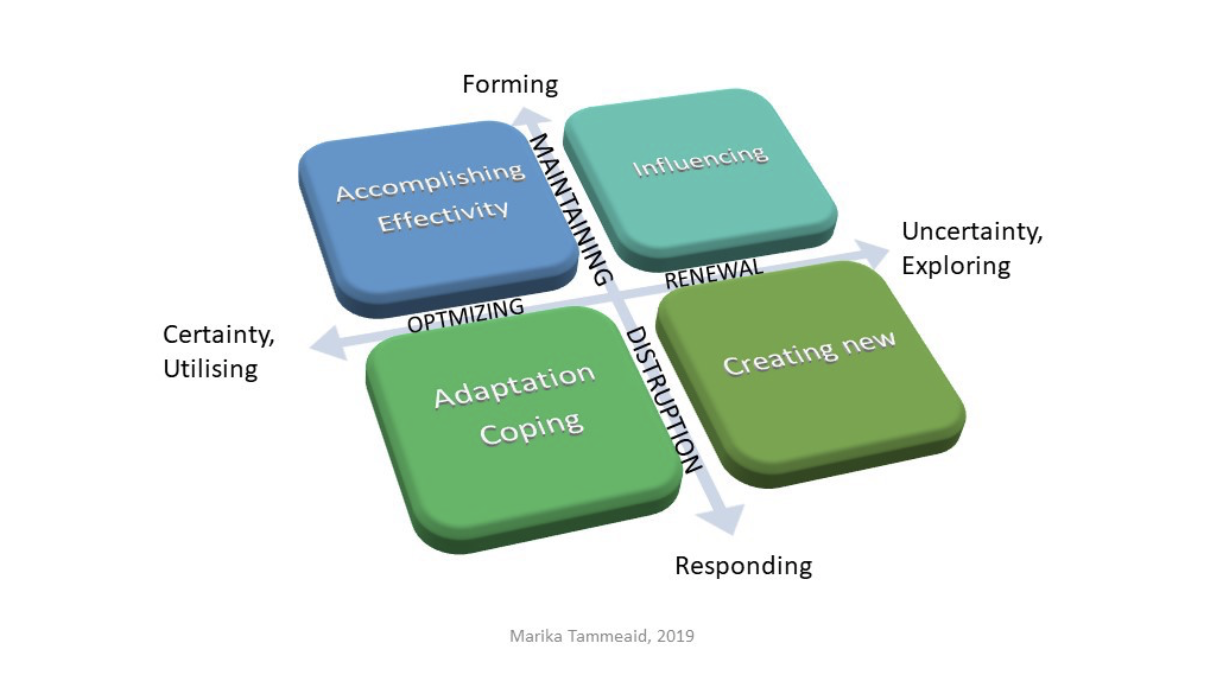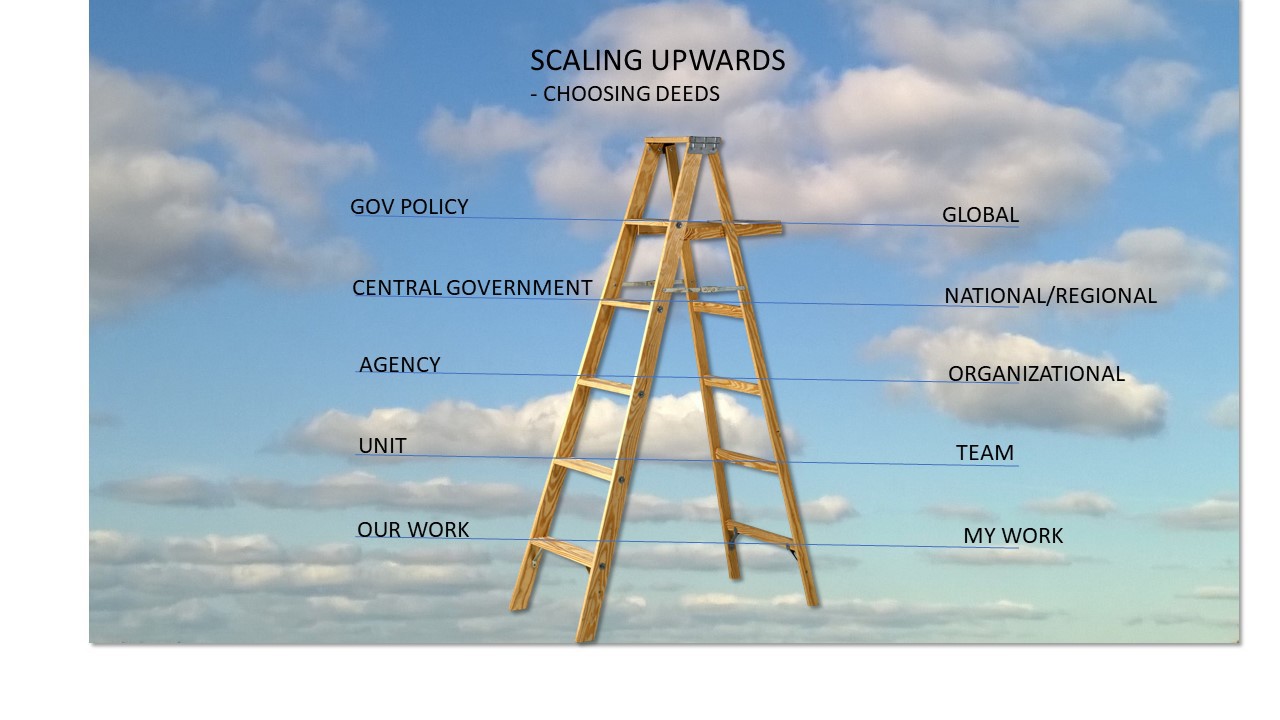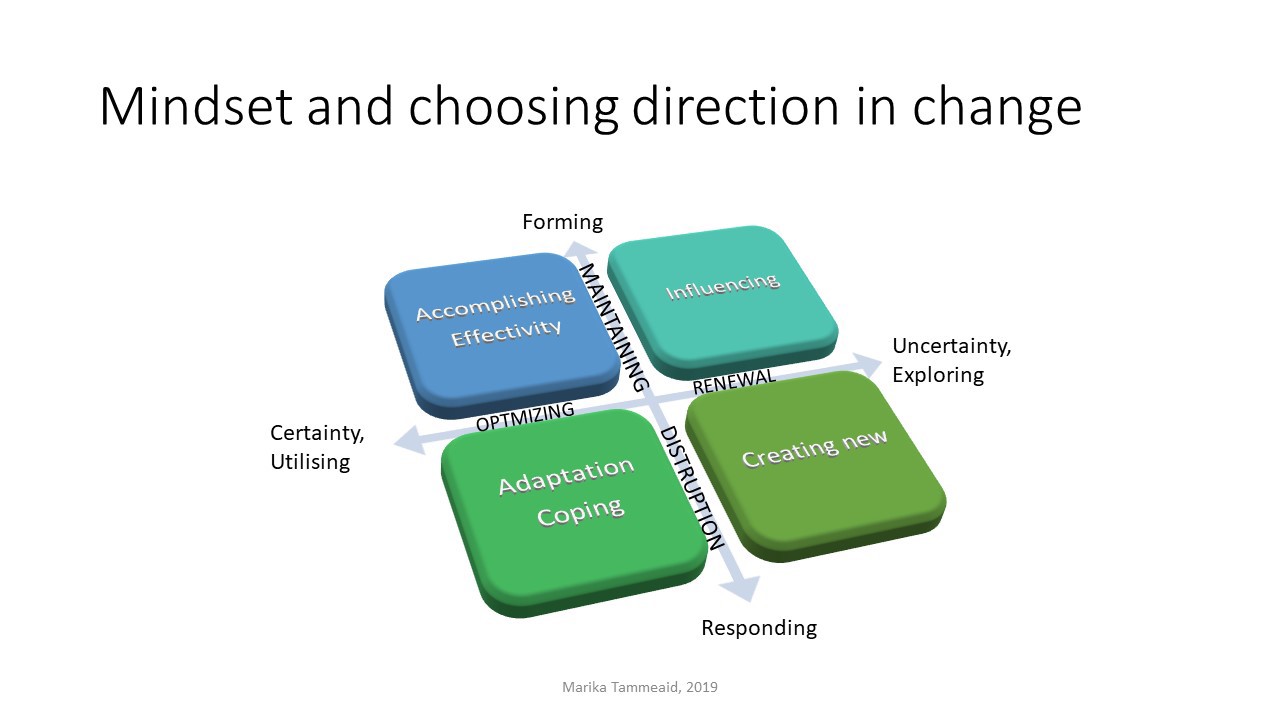"How to build large scale change"
Leading the client to go where they want to go
Jan 10, 2021

Introduced by Carey Glass
This article is short yet packs much thoughtful punch. It provides two practical tools for use in large scale change.
The first tool is a spin-off from the concept of an SF scale. It represents hierarchical organisations as a ladder to enable thinking about interactions from all perspectives; the broad perspective of leadership to the coalface perspective of staff.
The second is an elegant way of mapping the continuum and need for organisational stability, or change, against the level of environmental uncertainty. It provides a fantastically, manageable way of representing complexity for practical engagement and outcomes.
Large scale changes and transformation are usually also long-term journeys involving many organisations - sometimes in a hierarchical position to each other. My co-authors and I discussed this situation at the SFiO Unconference in Leuven Belgium, on 6 & 7 December 2019.
1. Introduction
We started with a true story where leaders shifted one department of a government organisation to another organisation. The transferred department had been very successful in its work. The employees were proud of their work and working community, and firmly opposed any changes in the organisational setting. The leadership of the department negotiated for a half a year to find possibilities to avoid the transfer, but eventually, the Ministry made the unpopular decision. When the director of the department explained the decision to the personnel, he described the situation beautifully and wisely. He described that the Ministry is one step higher on the ladder of Government, and from their level, they saw something we, from our position, did not observe. That something, with the broader perspective they had, made the decision a wise one.
2. Scaling upwards gives perspective and understanding
The story has inspired me to develop the idea of scaling upwards with clients. Very often, people see things only from the viewpoint of their work or mission, which is usually only a narrow slice of the whole scenery. Since we, as SF practitioners, are good at scaling, we might more often ask our clients to scale vertically, i.e. observe the situation one or several steps higher or lower on the ladder.

Viewing the situation from the perspective of the whole organisation, or regional, national or even global level, widens the view, which can build understanding, resources and a sense of proportion for a person or team concentrated in a part-optimising mindset. Likewise, it is helpful for many people who have worked for a long time at central or policy level to climb down the ladder to the perspective of a person or team and sense how things portray from that perspective. In large scale transformations, to make fruitful and conscious choices, it is vital to see the whole scenery and sharpen the ability to look at the possible trends and solutions from different steps of the ladder. Societies and organisations are intertwined ecosystems and issues interconnected.
After gaining a broader understanding by vertical scaling, two questions become important in large scale transformations:
- “What kind of an interaction partner are you (as a person, team or organisation) in the ecosystem of more substantial change?
- “What is it you want to build (or assure) in the transformation process?”
Since different visions and aspirations lead to different deeds, it is crucial to make these choices consciously, to help clients to go where they want to go and influence the transformation in the way they want to shape it.
The model below is something I had developed to help clients to navigate in long-term transformations. In the workshop at the Unconference, we fine-tuned the words and created useful SF questions to ask in different quadrants.

The two quadrants on the left side of the model describe the more traditional mindsets of organising and leadership – solution building within present organisational and operational boundaries:
- In the bottom left quadrant: we are coping to narrow possibilities and adapting the way of working to external demands
- In the higher left quadrant: we focus on the ethos of effectivity and accomplishing things at work faster and cheaper.
These can be rational choices in certain circumstances, but they both raise a question for how long this way of responding to change is viable. At worst, the left part can lead to work losing its meaning, or to doing wrong or outdated things more effectively, or looking for solutions only from the perspective of the own organisation or team.
The two quadrants on the right, raise questions about, the impact of our work and what it is we seek to build in the transition. Furthermore, who else (a person, an organisation) is an integral part of the solution and how we might co-create the new solutions together?
- In the upper right quadrant, we have a possibility to at least influence the situation in one way or another, but it is clear that we don’t have all the information and all the cards in our hands
- In the lower right quadrant, we can take the opportunity to practice real creativity and experiment or build on something purely new together with others.
In larger-scale contexts it is typical that people broadly share the restricting beliefs of what is possible and what is not, so it takes an extra effort to lead the way to re-think and find possibilities for new kind of thinking and action.
To support the clients to gather new, even contradictory information and deliberately look for other perspectives is an essential way to ease the change and to form unique solutions. In a political context, all changes and transformations have a long-time span and an extensive impact. So, it is vital that the consultant or facilitator also bears in mind the broader context and recognises that all the knowledge the group needs to create a better future is not necessarily found only within the group present.
In the workshop, we gathered possible questions to ask of clients in different quadrants of change:
Accomplishing / Effectivity
| Influencing
|
Adaptation / Coping:
| Creating:
|
One useful question can also be, “What quadrant would be the most useful to start with?”
3. Conclusion
The SF way of formulating powerful and energising questions can make a real difference in creating safe spaces for new thinking and action to arise. When we take the effort to stimulate the mindset for trusting, innovating, and collaborating across organizational and other kind of boundaries we help our clients to observe their own and their organization’s operations as a constructive and catalytic part of their ecosystem or society. In addition to that we are likely to accelerate transformation processes better in line with the needs of the society, citizen, and the end users. Vertical scaling helps in taking a helicopter view and bringing people together for the greater good.